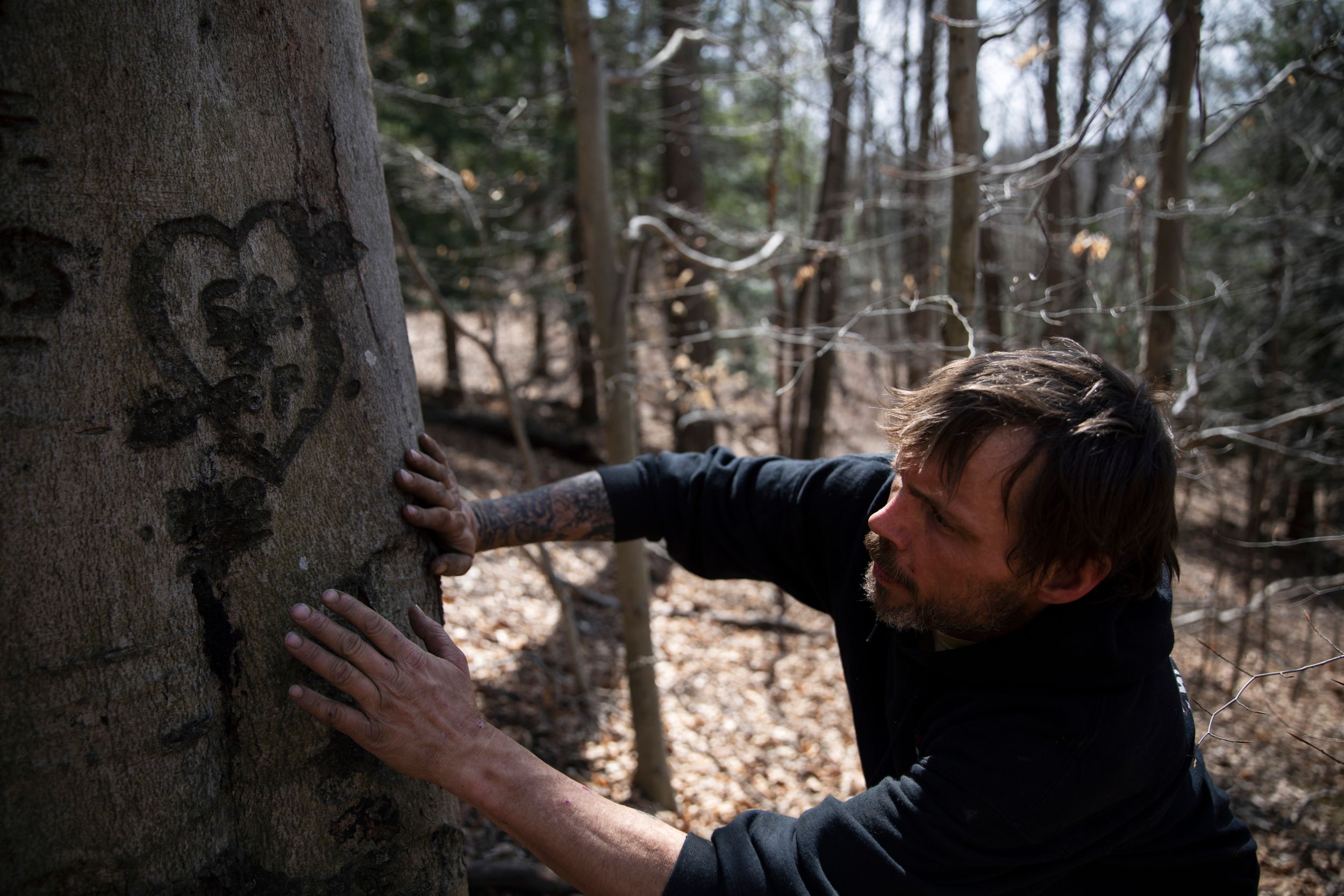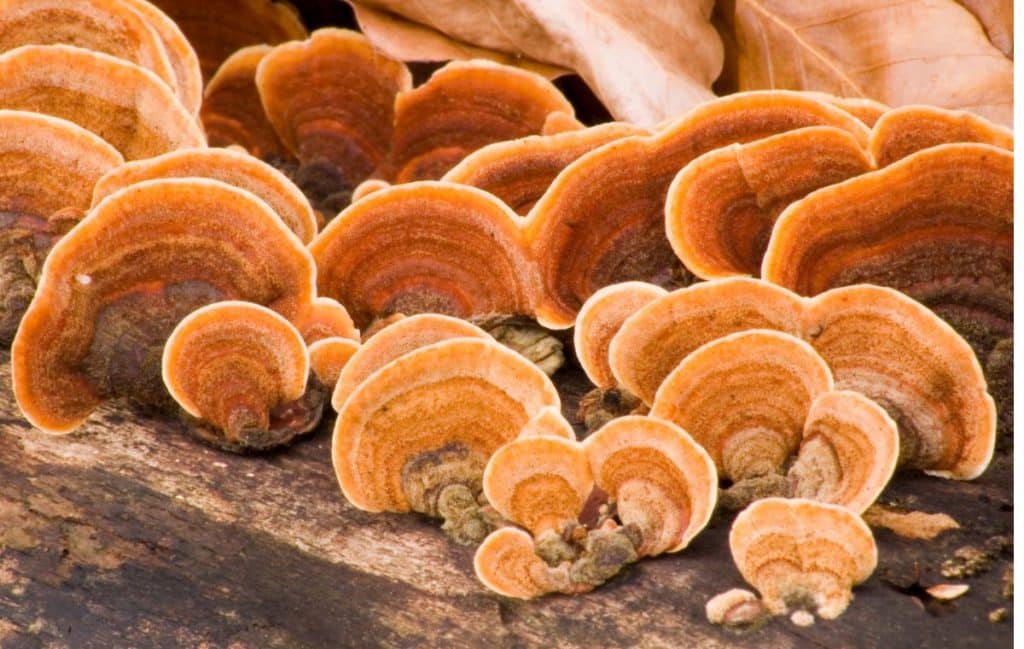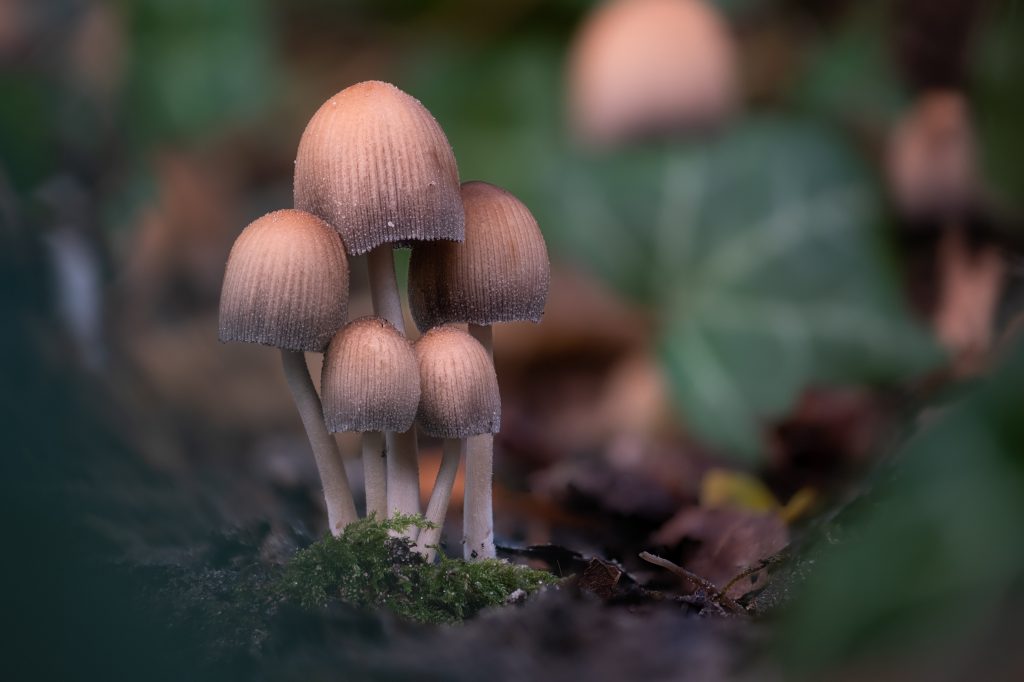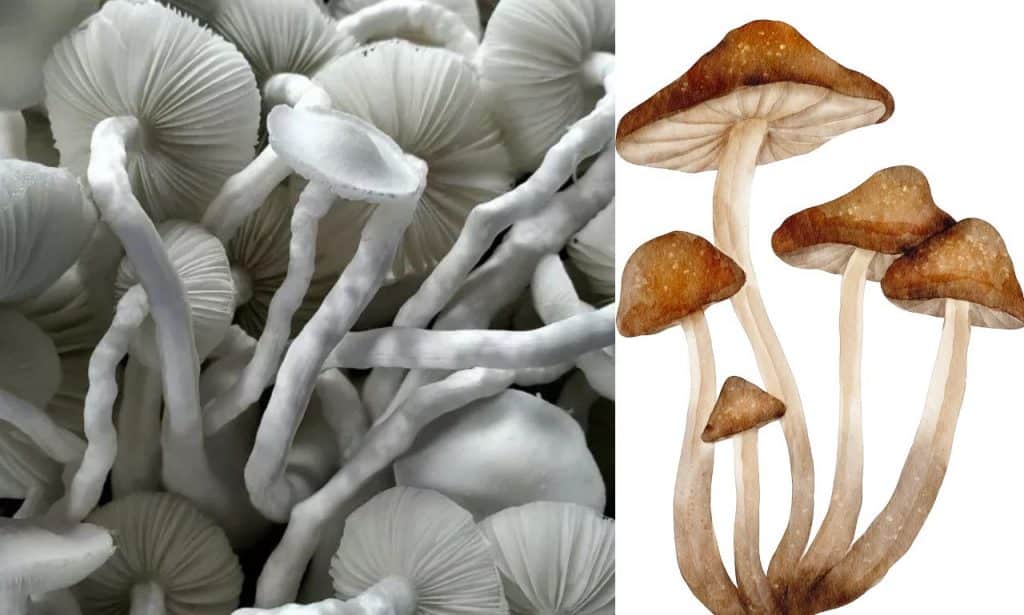Missouri Mushrooms are easy to find in Missouri, with the Common Puffball Mushrooms being a popular choice. These mushrooms can be found in gardens, yards, roadsides, and forest clearings due to their large size and bright white coloring.
From early spring to late fall, Missouri is home to a variety of mushrooms, including Morels, oyster mushrooms, and lion’s mane. However, it’s important to note that not all mushrooms in Missouri are edible, as some, like the orange and yellow Omphalotus illudens, are poisonous.
It’s essential to properly identify mushrooms before consuming them. We will explore the different types of mushrooms found in Missouri, their seasons, and their characteristics.

Credit: www.popularmechanics.com
Exploring The Types Of Missouri Mushrooms
Explore the fascinating world of Missouri mushrooms, including types such as edible, poisonous, and psychedelic varieties. From common puffball mushrooms to orange and yellow Omphalotus illudens, discover the diverse range of fungi found in gardens, yards, and forests throughout the state.
Common Garden Mushrooms
- Common Puffball Mushrooms: These distinctive fungi are easy to find in Missouri, as they grow in gardens, yards, roadsides, and forest clearings. They are known for their large size and bright white coloring.
False Parasol
- Description:
- False parasol mushrooms, also known as Chlorophyllum molybdites, are a common species found in Missouri. They have a distinct umbrella-shaped cap with greenish-brown scales and white gills. Be cautious though, as they can be toxic if ingested.
Giant Puffball
- Description:
- The giant puffball mushroom, scientific name Calvatia gigantea, is a fascinating mushroom found in Missouri. It is known for its enormous size, which can reach up to three feet in diameter. This mushroom is edible when it’s young and white on the inside, but it’s important to properly identify it before consuming.
Marasmius Oreades
- Description:
- Marasmius oreades, commonly known as the fairy ring mushroom, is a species that forms circular patterns or arcs in grassy areas. These mushrooms have honey-colored caps and slender, wiry stems. While they are generally not toxic, they are not highly sought after for culinary purposes.
Agaricus Campestris
- Description:
- Agaricus campestris, also known as the Meadow Mushroom, is a common edible mushroom found in Missouri. It typically has a white cap with brown scales and a sturdy stem. This mushroom is widely enjoyed for its mild flavor and versatility in cooking.
Wild Mushrooms
- Description:
- Wild mushrooms encompass a wide range of species found in Missouri. While some are edible and highly sought after for culinary purposes, others can be poisonous and even psychedelic. It is essential to have proper knowledge and expertise or consult with experts before foraging and consuming wild mushrooms.
Magic Mushrooms
- Description:
- Magic mushrooms, also known as psilocybin mushrooms, contain the psychoactive compound psilocybin. These mushrooms have been used for centuries for spiritual and recreational purposes. In Missouri, certain species of magic mushrooms can be found, but it is important to note their legal status and risks associated with their consumption.
Galerina Marginata
- Description:
- Galerina marginata, or deadly galerina, is a poisonous mushroom found in Missouri. It resembles the edible honey mushroom but can be distinguished by its darker cap and lack of ring on the stem. Consumption of this mushroom can lead to severe liver damage or even death.
Fly Agaric
- Description:
- Fly agaric, also known as Amanita muscaria, is a visually striking mushroom with a bright red cap and white spots. While it is not commonly found in Missouri, it is an iconic symbol of mushrooms worldwide. Fly agaric contains psychoactive compounds and is highly toxic if consumed in large quantities.
Chanterelle
- Description:
- Chanterelle mushrooms are highly regarded for their delicate flavor and distinctive shape. These mushrooms have a yellow to orange color and a trumpet-like cap. They are a prized culinary ingredient and can be found in the forests of Missouri during specific seasons
Chlorophyll…
- Description:
- Chlorophyll refers to the pigment responsible for the green color in plants. While mushrooms do not produce chlorophyll like plants, they can sometimes have a greenish tint due to other pigments or environmental factors. The presence of chlorophyll-like colors in mushrooms can be visually striking but does not have any significant impact on their edibility or toxicity.
Identifying Edible And Poisonous Mushrooms In Missouri
Discover the fascinating world of Missouri mushrooms with a guide on identifying edible and poisonous varieties. From the common puffball to the orange and yellow Omphalotus illudens, this resource will help you navigate the diverse species found in gardens, yards, and forests.
If you’re a mushroom enthusiast in Missouri, it’s important to know how to distinguish between edible and poisonous varieties. While some mushrooms can be delicious additions to your meals, others can be potentially harmful if ingested. In this section, we’ll explore common edible mushrooms, poisonous mushrooms to avoid, and even touch upon psychedelic mushrooms.
Common Edible Mushrooms:
- Morel mushrooms: These coveted mushrooms have a short growing season in spring and can be found in wooded areas. They have a distinctive honeycomb-shaped cap and a rich, earthy flavor.
- Oyster mushrooms: Found throughout the year, oyster mushrooms are known for their delicate texture and mild, nutty flavor. Look for them on fallen trees, stumps, or logs.
- Chanterelle mushrooms: With their vibrant orange or yellow color, chanterelle mushrooms are a popular choice among foragers. They have a fruity, apricot-like aroma and a delicate taste.
- Shaggy mane mushrooms: Recognizable by their shaggy appearance, these mushrooms are best harvested when young and white in color. They have a delicate flavor and a slightly spongy texture.
- Lion’s mane mushrooms: Often mistaken for white coral, lion’s mane mushrooms have a unique appearance with their cascading, spiky white tendrils. They have a seafood-like flavor and a meaty texture.
Poisonous Mushrooms To Avoid:
- Death cap mushrooms: So named for their lethal properties, death cap mushrooms are extremely toxic and can cause severe liver damage or even prove fatal if consumed. They resemble edible mushrooms, so be cautious when foraging.
- Destroying angel mushrooms: These mushrooms are often mistaken for edible varieties, but they contain deadly toxins. They have a white, bell-shaped cap and are found in wooded areas.
- False morel mushrooms: While true morel mushrooms are prized, false morels can be toxic. False morels have a wrinkled cap and contain a toxic compound called gyromitrin.
- Cortinarius mushrooms: This genus of mushrooms includes many toxic species that should be avoided. They often have a rusty brown or purple cap and can be found in woodland areas.
Psychedelic Mushrooms:
- Psilocybin mushrooms: Commonly referred to as magic mushrooms, these fungi contain the hallucinogenic compound psilocybin. In Missouri, there are various species of psilocybin mushrooms, and their possession, sale, and consumption are illegal.
Remember, when foraging for mushrooms in Missouri, it’s essential to correctly identify the species before consuming them. Consider joining a local mycological society or consulting an expert for guidance to ensure your mushroom foraging adventures are both safe and enjoyable.
Mushroom Seasons In Missouri
Discover the fascinating world of Missouri mushrooms and their seasons throughout the year. From the sought-after morels in spring to oyster and lion’s mane mushrooms in late fall, Missouri offers a variety of edible and poisonous mushrooms to explore.
Missouri is a treasure trove for mushroom enthusiasts, with distinct seasons that bring forth a variety of fungi. From spring to fall, the state offers an abundance of mushrooms waiting to be discovered. Whether you’re a seasoned forager or a curious beginner, explore the different mushroom seasons in Missouri:
Spring Mushroom Season:
- Morels: These highly sought-after mushrooms make their appearance in early spring, usually during April and May. Morels have a distinctive honeycomb-like cap and a delicate flavor. They can be found in woodland areas, particularly near elm, oak, and ash trees.
Summer Mushroom Season:
- Oyster mushrooms: This versatile mushroom species thrives during the summer months. Oyster mushrooms are known for their soft texture and delicate flavor. Look for them on the trunks of dead deciduous trees or fallen logs.
- Lion’s Mane: Also known as the pom-pom mushroom, lion’s mane is an intriguing species that resembles a soft white globe of cascading strands. Look for them in the summer, especially on hardwood logs and stumps.
Fall Mushroom Season:
- Chicken of the Woods: As autumn arrives, so does the vibrant chicken of the woods mushroom. Its bright orange and yellow colors make it easily distinguishable. This mushroom can be found growing on decaying logs or tree stumps.
- Chanterelles: With their trumpet-like shape and vibrant orange color, chanterelles signify the start of the fall mushroom season. They are prized for their fruity aroma and delicate, buttery flavor. Look for them near oak and beech trees.
Remember, mushroom foraging should always be done with caution and accompanied by an experienced guide or extensive knowledge of mushroom identification. Enjoy the thrill of exploring mushroom seasons in Missouri, but always prioritize safety and responsible foraging practices. Happy hunting!
Notable Missouri Mushroom Species
Discover the diverse and fascinating world of Missouri mushrooms! From the Common Puffball to the vibrant orange and yellow Omphalotus illudens, Missouri offers a variety of notable mushroom species. Whether you’re a seasoned mushroom forager or simply curious about the local fungi, Missouri is the perfect place to explore these captivating organisms.
When it comes to Missouri mushrooms, there are several notable species that are worth mentioning. These mushrooms can be found in gardens, yards, roadsides, and forest clearings throughout the state. Let’s take a closer look at some of these fascinating fungi.
Common Puffball Mushrooms:
- Large and bright white in color.
- Easy to find due to their distinctive appearance.
- Found in gardens, yards, roadsides, and forest clearings.
Glowing Omphalotus Illudens:
- Orange and yellow in color.
- Resemble the edible chanterelle mushroom.
- However, they are poisonous and should not be consumed.
Yellow Morel:
- One of Missouri’s most coveted mushrooms.
- Found in early spring and late fall.
- Have a short growing season of just several weeks in spring.
- Can also be found in the beginning of winter if weather conditions permit.
Remember, when mushroom hunting in Missouri, it’s important to have a good knowledge of the different species to ensure your safety. Always consult an expert or reliable source before consuming any wild mushrooms.
Whether you’re a seasoned mushroom enthusiast or a curious beginner, exploring the world of Missouri mushrooms can be a rewarding and educational experience. So grab your basket and head out into the great outdoors to discover these incredible fungi for yourself.
Mushroom Hunting Tips And Regulations In Missouri
Discover the best mushroom hunting tips and regulations for Missouri. From identifying edible mushrooms like the Common Puffball to knowing when different mushrooms are in season, this guide will help you explore the fascinating world of Missouri mushrooms.
Whether you’re a seasoned mushroom hunter or new to the hobby, it’s essential to follow safety precautions and adhere to the guidelines set by the Missouri Department of Conservation. Here are some valuable tips and regulations to keep in mind while hunting for mushrooms in Missouri:
Mushroom Hunting Safety Precautions:
- Always wear appropriate clothing and footwear for outdoor activities.
- Equip yourself with a sturdy basket or mesh bag to collect mushrooms.
- Carry a reliable field guide or use a mushroom identification app to help with identifying different species.
- Avoid consuming or handling mushrooms you are unfamiliar with, as some can be poisonous.
- Take caution and avoid private properties or areas with restricted access.
- Be aware of your surroundings, watch out for hazards like uneven terrain, fallen branches, or snakes.
- Stay hydrated and protect yourself from the sun with sunscreen and a hat.
- Inform someone about your mushroom hunting plans and when you expect to return.
These safety precautions will help ensure a pleasant and accident-free mushroom-hunting experience.
Missouri Department Of Conservation Guidelines:
- Obtain the necessary permits: Before gathering mushrooms, make sure to check for any specific permits or regulations set by the Missouri Department of Conservation.
- Respect wildlife and their habitats: While mushroom hunting, take care to leave the surrounding environment undisturbed and refrain from damaging plants, trees, or wildlife habitats.
- Do not disturb cultural or historical sites: Be conscious of your surroundings and avoid any cultural or historical sites that may be present in the area.
- Respect private property: Obtain permission from landowners before entering private properties for mushroom hunting purposes.
- Be mindful of mushroom quantities: Take only what you will use and avoid excessive harvesting to ensure sustainable mushroom populations.
- Stay up to date with regulations: Check the Missouri Department of Conservation website for any updated guidelines or regulations regarding mushroom hunting.
By following these guidelines, you can have an enjoyable and responsible mushroom hunting experience in Missouri. Remember to prioritize safety, respect the environment, and continue to educate yourself about mushroom identification to make the most out of your outings. Happy hunting!
Conclusion (Optional)
Discover the fascinating world of Missouri Mushrooms with our comprehensive guide. From common puffballs to morels and oyster mushrooms, learn about the different types and when they are in season. Find out where to spot these distinctive fungi in gardens, yards, and forest clearings.
**Summarize the importance and beauty of Missouri mushrooms. **
Missouri mushrooms are not only important for the ecosystem but also offer an enchanting sight for nature lovers. From their diverse range of types to their culinary value, these mushrooms hold a special place in the hearts of mushroom enthusiasts.
Let’s explore the significance and allure of Missouri mushrooms:
Types Of Missouri Mushrooms:
- Morels: These highly sought-after mushrooms have a short growing season, usually in early spring. Their distinctive honeycomb-like caps make them easily recognizable.
- Oyster mushrooms: Found from spring to the beginning of winter, oyster mushrooms are versatile and prized for their delicate flavor.
- Chanterelles: Often mistaken for a poisonous variety, the orange and yellow chanterelle mushrooms in Missouri possess a unique beauty. However, caution must be exercised as there are poisonous look-alikes.
Edible And Poisonous Varieties:
- Edible mushrooms: Missouri offers a variety of edible mushrooms, such as morels, oyster mushrooms, and chanterelles. These culinary delights can elevate dishes with their distinct flavors and textures.
- Poisonous mushrooms: While Missouri is home to many edible mushrooms, it is crucial to properly identify them to avoid consuming poisonous varieties. The false parasol and fly agaric are some examples of toxic mushrooms found in the state.
Psychedelic Potential:
- Psychedelic mushrooms: The psychedelic properties of Missouri mushrooms, specifically certain species of psilocybin-containing mushrooms, have attracted interest within the scientific and therapeutic communities. It’s important to note that these mushrooms are illegal for recreational use.
Aesthetically Pleasing:
- Visual appeal: Missouri mushrooms showcase an exquisite range of colors, shapes, and textures. From the regal structure of morels to the delicate beauty of chanterelles, these fungi present a captivating sight in forests, gardens, and other natural settings.
- Biodiversity: The abundance of mushroom species in Missouri plays a crucial role in maintaining the biodiversity of the region. They contribute to the decomposition process, recycling nutrients, and serving as food sources for insects and animals.
As we delve into the fascinating world of Missouri mushrooms, it becomes evident why they hold both botanical and aesthetic significance. Whether you’re a forager, a nature enthusiast, or simply appreciate the beauty of the natural world, exploring the diverse mushrooms of Missouri offers a delightful journey into the wonders of fungi.
Frequently Asked Questions On Missouri Mushrooms
What Are The White Mushrooms In Missouri?
The white mushrooms in Missouri are Common Puffball Mushrooms. They are easy to find due to their large size and bright white coloring.
What Mushrooms Are In Season In Missouri Right Now?
The mushrooms currently in season in Missouri are Common Puffball Mushrooms, Morels, Oyster Mushrooms, and Lion’s Mane Mushrooms.
What Are The Orange And Yellow Mushrooms In Missouri?
The orange and yellow mushrooms in Missouri are the Omphalotus illudens. They resemble edible chanterelle mushrooms but are actually poisonous. They grow in summer and fall on wood.
What Are The Yellow Mushrooms In Missouri?
The yellow mushrooms found in Missouri are yellow morels. They are easy to find and grow in gardens, yards, and forest clearings.
Conclusion
Missouri is a treasure trove of mushrooms, offering a variety of edible and poisonous species for enthusiasts to discover. The Common Puffball Mushroom is easily found throughout the state due to its large size and bright white color. On the other hand, the orange and yellow Omphalotus illudens mushrooms may resemble the edible chanterelle, but they are actually toxic.
Missouri’s mushroom season begins in early spring with the coveted morels and extends until late fall, with oyster mushrooms and lion’s mane being among the last to thrive. It is important to note that weather conditions play a significant role in mushroom growth.
Mushroom foraging in Missouri is an exciting activity, but it’s crucial to correctly identify each species to ensure safety. With a diverse range of mushrooms available, Missouri truly is a mushroom enthusiast’s paradise. Happy foraging!






